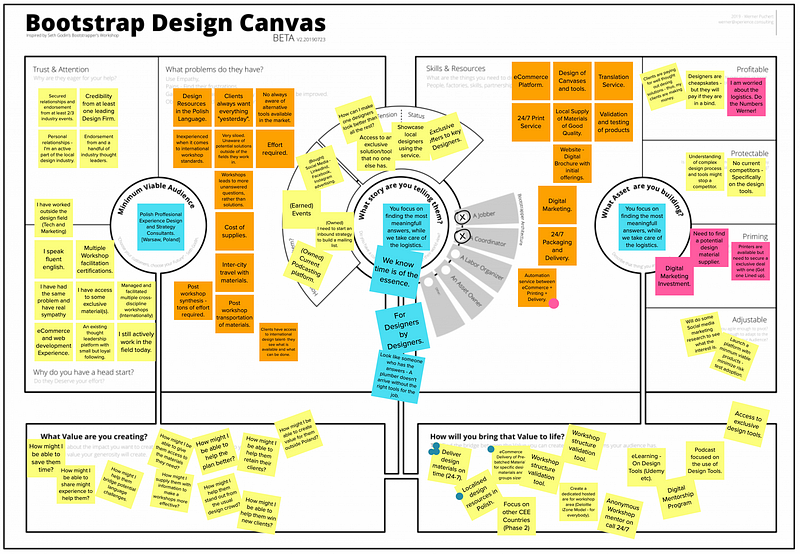Designing a ‘Bootstrap’
Designing a ‘Bootstrap’
Until recently bootstrapping was something I associated with technology. Usually, a piece of software that initiates your hardware and software like your operating system when firing up your laptop in the morning. The ‘coffee’ of the software world if you will.
Bootstrapping is also a business approach. An endeavour without extensive investment or financial risk to yourself (unlike a start-up, for example).
I learnt the ins-and-outs of Bootstrapping last year as part of Seth Godin’s Bootstrapper’s workshop. I’d encourage you to check it out if never done a Seth Godin Workshops before. It’s usually fast-paced with tons of growth opportunities within a community of like-minded individuals. One a piece of advice, be ready to put in the time and effort if you’re looking to maximise your return on investment.
During the Bootstrapper’s workshop, my brain connected the design methods I use in my practice with the topics they were covering.
Bootstrapping a business requires three things,
A group of people that you perhaps already have access to, who have a problem that you can solve for them. A ‘niche audience’ that you aim to serve generously.
You want to gain momentum quickly, asses potential copy-cats (and competitors) to continuously evolve and grow this ‘Asset’.
A ‘tool’ for thought
By developing an authentic and compelling narrative, you give your audience a reason to trust you. The right ‘story’ will spread like wildfire.
This drove me to articulate this for my own designs into a simple design tool. The aim of these tools is to identify these three elements and connect them in a meaningful and sustainable way.

Part 1 — ‘Niche Audience’
(1) ‘Niche Audience’ in the context of Bootstrapping this is a group of people, businesses or individuals that you have access to. A group that you can solve a specific problem for. Consider your network, your social communities, interest groups and identify people who will listen to you. Who are they?
(2) Empathise with them, what are the challenges they are facing?
(3) Why will they (or do they) trust you?
(4) You want to serve them uniquely, why do you have a head start?
(5) What value do you want to create for your audience? Be careful; this is a trick: This is not your solution, instead define the impact you want to create. For example, “I can save them time” — that would be an impact as a result of your product or service. Tip: I do this by asking, “How might I … “
Part 2 — Building an ‘asset.’
(6) Define your solution; how will you create this value? For some folks, this is obvious, but if you are exploring ideas, find ways you can fill the gap between (5) and (2). Prioritise your thoughts, or combine some of them to shape your offering.
(7) What Kind of Bootstrapping architecture will you be using? There are a few different models you can turn to;
- Jobbers — You are bringing the right product to the right people in a unique way.
- Organisers — Your ability to deliver and connect the right people creates value.
- Coordinators — You pride yourself on the trust you have earned and can connect your customers with the right services and labour they need.
- Asset owners — You own something that someone wants to use for a short period.
(8) How will you do this? What services, skills and resources do you need to set this up?
(9) How will you be making a profit? Have you considered the business plan? How secure is your business and are you able to pivot easily?
(10) You don’t want to create something that someone will copy in a few weeks. What is the potential of this becoming an asset for you over time?
Part 3 — What ‘story’ are you telling your audience?
(11) There is an interesting interplay between increasing the status of your customers and decreasing their tension. How will you use tension and status for enrolment?
(12) You want them to ‘hear’ you. How and where will you find your customers?
(13) How does your offering fit into their narrative? If you consider your customer to be the here of your story, how are you helping them tell that story?

Bonus — Podcast Epidsode
Listen to my co-host Jonathan Gall and I disucss bootstrapping a business and describe all the elements related to using the tool to design your own side project.
